There’s never a dull moment in the weed world, professes State Weed Coordinator Steve Ryder of the Colorado Department of Agriculture (CDA), adding that weed management was the occupation that came about the day after agriculture was established.
Farmers, gardeners and landscapers want to focus on desirable plants and avoid spending time on undesirables – weeds. What is undesirable can be a topic of debate, such as with dandelions that mostly face opposition but also have their advocates. But, in general, desirable plants have multiple benefits to humans and animals. They also behave well – unlike weeds that take over biomes, crowd out native and desirable plants, and clog waterways and other ecosystems.
The Weed Science Society of America defines a weed as a plant that causes economic losses or ecological damage, creates health problems for humans or animals, or is undesirable where it is growing. Crabgrass (Digitaria) and giant foxtail (Setaria faberii) are common examples.
Federal and state governments designate some plants as noxious weeds, when they are found to injure public health, agriculture, recreation, wildlife, or property. These invasive plants are non-native, aggressive invaders.
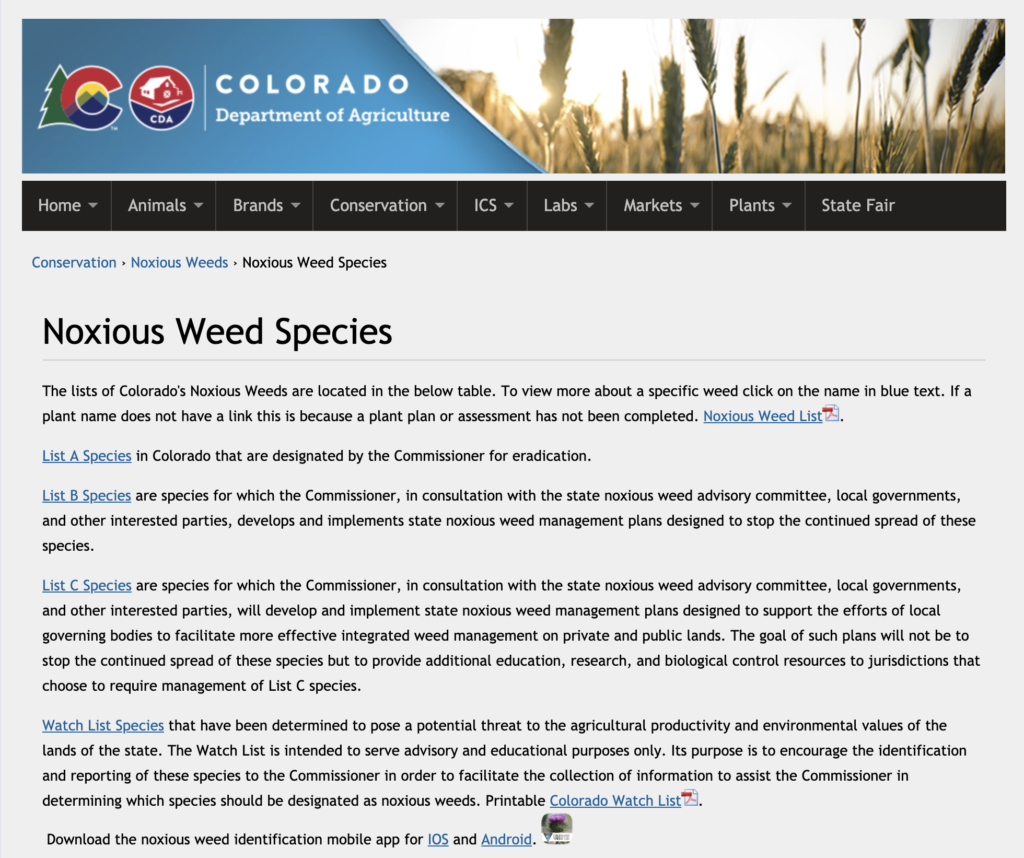
“The vast majority are from Eurasia, where the climate is very similar to ours,” explained Ryder. “Colorado has an insectary that grows agents for biological control of noxious weeds found in those places where the plants we consider noxious are native. We and others working in the biocontrol research world find bugs that will feed on the target plant, and bring the bugs back to the states. It’s a years-long development process.”
Many noxious weeds also come from the large, tall grass prairies of Central Asia. In general, most invasive plants arrive on American soil carried by immigrants who unknowingly bring them on other plant or animal products, or who knowingly bring them as useful plant with natural controls back in their country of origin.
Aquatic invasives often originate from the subtropical parts of the world, but sometimes the southeastern states in the U.S.
“People often suggest we bring kudzu (Pueraria montana) or palmer amaranth (Amaranthus palmeri) into the state, because kudzu can be great for cattle forage, and a number of amaranth species have been cultivated for millennia for a variety of purposes. Kudzu is native to the southeastern U.S., and many of the amaranths are native to the southwestern U.S. Both are devastating to agriculture in the Midwest, where they take over fields of other crops,” he said.
The Problem of Subspecies & New Plants
He believes the next challenge for weed managers is determining how to handle new product varieties and subspecies developed through plant genetics.
“We find that a species is more of a continuum than a specific plant, which makes it difficult for us to list it as noxious because we list it by genus and species,” he said. “We’ve had the argument given to us a couple times by plant developers who said they had found the invasive gene and removed it from this species or subspecies, so it should no longer be on the noxious weed list. We have to tell them that, at present it is still under the same species. We can’t split our lists into subspecies, or we could end up with hundreds of plants on the noxious weed list with the varieties and hybrids often unidentifiable in the field. We would be left with having to treat both or leave both alone.”
He continued, “It’s going to be more and more of a challenge as people get more and more creative in plant breeding. Hybrids in general tend to be bigger and more robust than the originals. We have a hybrid of toadflax that is not in Colorado that we know of yet, but it is one of those big, strong, durable plants that are difficult to control.”
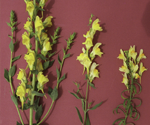
Hybrid toadflax (Linaria vulgaris x L. dalmatica) 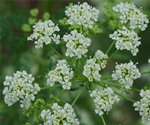
Poison hemlock (Conium maculatum) 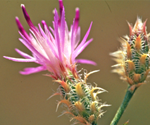
Squarerose knapweed (Centaurea virgata)
Knowledge & Control as the Solution
Garden centers, growers and consumers can help prevent and reduce the spread of noxious weeds by knowing how to identify and control them. Though noxious weeds rarely originate from U.S. greenhouses and nurseries, checking the descriptions on seed packet contents and researching the invasiveness new varieties before purchasing them is always a good idea.
In the store or on the land, “It’s really important to know what you’re looking at and have that plant identified,” he said. “For example, the carrot family has some of the most nutritious cultivated plants in the world, but it also has some of the most deadly like poison hemlock.”
After plants have been solidly identified as noxious, many treatment and control options are available, not just herbicide off the shelf. Garden center staff who know the options can provide valuable advice and help landowners learn how to deal with these weeds.
“It’s really hard to give advice when you don’t see plants, but you don’t want customers to dig up plants and bring them to the nursery, especially if they are going to seed. Sometimes you see someone with a fistful of thistle plants and little cottony seeds just starting to float around,” he explained.
Instead of bringing in weeds for identification, he recommends good informative photographs, showing the whole plant in its environment so the context of water availability and other conditions can be understood. Closeup shots of different parts of the plants can be good secondary photos if they are in focus and show several features such as the stem, leaves and both inner and outer flower. Taking good photos can be quite a challenge.
“Most counties have weed managers and those folks are a pretty good source of advice on weeds, but a lot of county weed managers work mostly with weeds in rangelands and disturbed areas, and are experienced in applying herbicides for road rights of way and open space. Many weed managers are also knowledgeable about control solutions for backyard gardeners, too,” he said.
The Colorado Weed Management Association is a good source of resources, and several gardening and wildflower books provide information about weeds.
“Resources are available depending on how in depth landowners want to get as far as knowing what’s growing on their land,” he concluded.
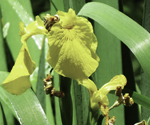
Yellow flag iris (Iris pseudacorus) 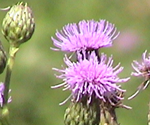
Canada thistle (Cirsium arvense) 
Medusahead (Taeniatherum caput-medusae)
RESOURCES:
Weld County, Colorado Weed Management website, including resources such as control options and a kid’s corner: https://www.weldgov.com/departments/public_works/weed_management
Larimer County, Colorado Weed District website including control options and laws: https://www.larimer.org/naturalresources/weeds
Colorado Weed Management Association website, offering December 2020 and April 2021 training sessions and books of Colorado weeds: https://cwma.org/
Pajarito Environmental Education Center Weed Guide for Los Alamos , N.M. area: https://peecnature.org/learn/nature-guides/weed-guide/
N.M. State University Weed Specialists, a source for brush and weed information in New Mexico: https://weeds.nmsu.edu/
Weeds of the West, 2001 (9th edition), Western Society of Weed Science (available from various online booksellers)
*See related article on Why to Pay Attention to Noxious Weeds










